The Germanic tribes were groups of people living in central and northern Europe during the Iron Age, sharing a common language group that is the root of all Germanic languages (which today includes over 515 million native speakers of languages like English, German, Dutch, and the Nordic languages to name a few).
What you may not know is that the Germanic people are all thought to have originated from a fairly small area in southern Scandinavia and northern Germany around the 4th century BCE, from where they set out on the Great Migrations around all of Europe and parts of Asia.
These migrations coincided with—and definitely contributed to—the fall of the Roman empire around the 6th century CE, some 200-300 years before the Vikings started their European raids and expansions from Scandinavia.
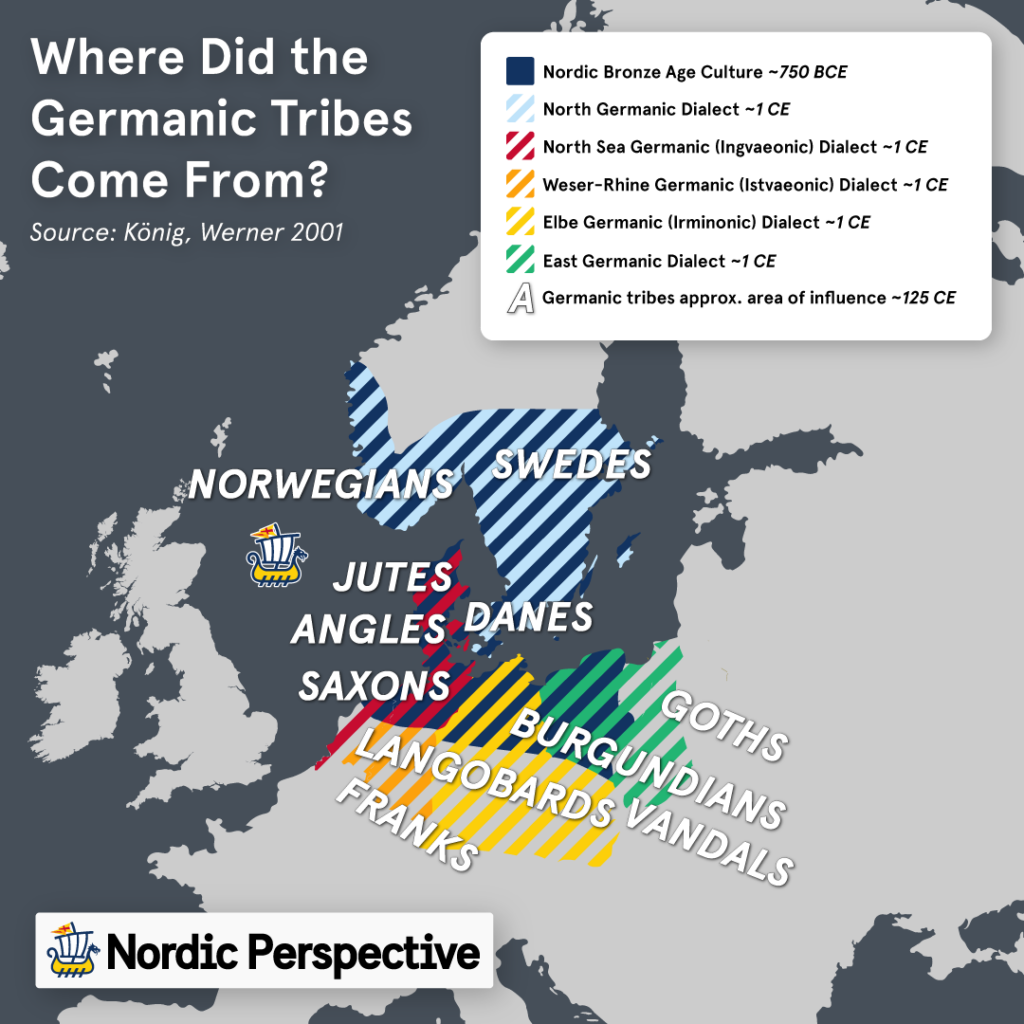

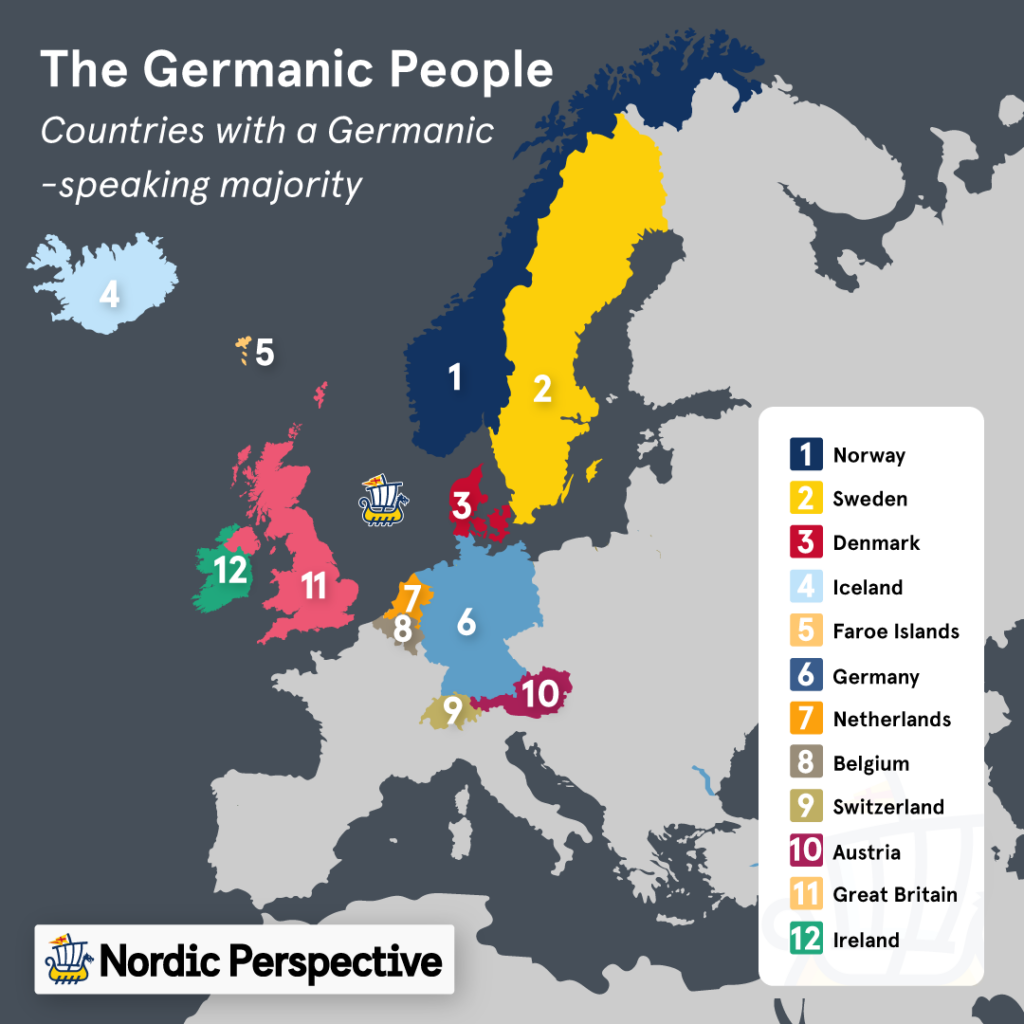
(Tap/click for bigger images)
ℹ️ The generally accepted definition of what and who qualifies as Germanic is tied to archaeological (weapons, tools, artifacts) and linguistical (runic script, modern languages) proof, and not that much with the borders of modern-day Germany or even the Germania of Roman times.
I’ve plowed through many books and academic publications to answer the questions below, and in order to stay accurate and unbiased throughout. I’ve also created detailed and illustrated maps to more easily explain the history, migrations, cultures, and languages of the Germanic people.
- Where Did the Germanic Tribes Come From?
- Who Were the Germanic Tribes?
- North Germanic (Nordic) Tribes
- North Sea Germanic (Ingvaeonic) Tribes
- Weser-Rhine Germanic (Istvaeonic) Tribes
- Elbe Germanic (Irminonic) Tribes
- East Germanic (Illevionic) Tribes
- Other Famous Germanic People
- What is the Oldest Germanic Language?
- How Did Germanic Social Structure Look Like?
- How Similar Were the Germanic Tribes?
- The Modern-Day Legacy of the Germanic Tribes
- A Timeline of the Germanic People
Where Did the Germanic Tribes Come From?
From archeological findings and linguistical studies, most historians agree that the Germanic tribes originated from the Nordic Bronze Age culture that was dominant in Scandinavia and Northern Germany around 750 BCE.
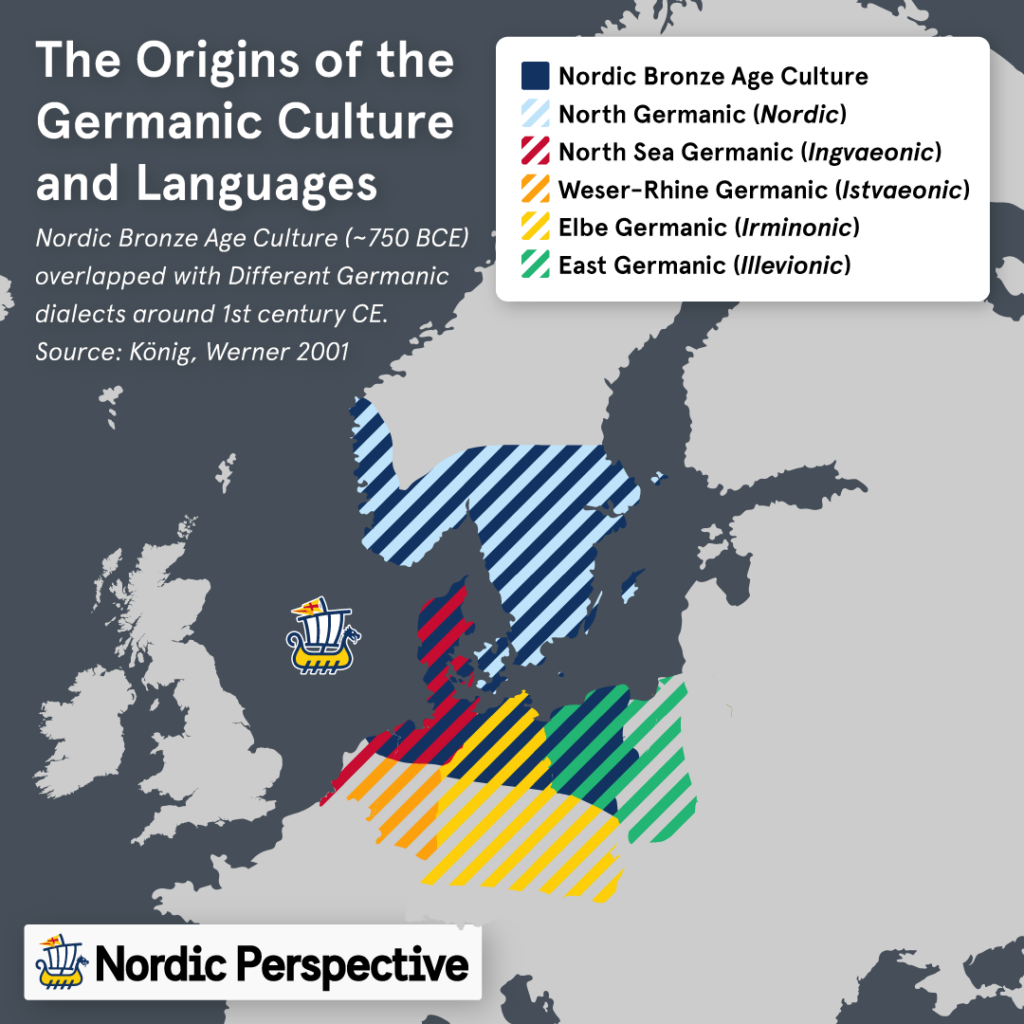
We also know that what we would end up calling Germanic culture quickly spread south into Central Europe, and eventually the entire European continent.
Who Were the Germanic Tribes?
There were numerous unique Germanic cultures that sprouted out of the Nordic Bronze Age culture, and they are usually divided linguistically into North Germanic (Swedes, Danes, Norwegians), North Sea Germanic (Angles, Saxons, Jutes), Weser-Rhine Germanic (Franks), Elbe Germanic (Langobards), and East Germanic (Goths, Burgundians, Vandals) people.

Let’s take a look at some of the more famous Germanic tribes, and how they can be divided into different groups depending on where they came from and where they migrated to.
North Germanic (Nordic) Tribes
North Sea Germanic (Ingvaeonic) Tribes
Weser-Rhine Germanic (Istvaeonic) Tribes
Participated in numerous rebellions against the Romans, but was ultimately absorbed into the larger Frankish culture group.
Here is a decent visualization of the rise and fall of the Frankish Empire:
Elbe Germanic (Irminonic) Tribes

Photo by Theutatis is licensed via CC BY-SA 4.0
East Germanic (Illevionic) Tribes
Other Famous Germanic People
The Germanic tribes no doubt had a huge impact on European history, forging multiple influential kingdoms and even empires that ruled the continent for hundreds and hundreds of years in the ashes of the Roman Empire.
These kingdoms became predecessors to the modern-day countries of England, France, Germany, Italy, Spain, the Netherlands, Sweden, Denmark, Norway, Iceland, and the Faroe Islands (to name a few).
I made a map showing the extent of the Germanic Tribes and Kingdoms at the fall of the Roman Empire around 476 CE:

What is the Oldest Germanic Language?
The ancestor to all later Germanic languages is thought to have been Proto-Germanic, a language spoken in Scandinavia during the Iron Age (around 500 BCE), but never written down. The oldest documented Germanic language is the very closely related Gothic (preserved in the 4th-century Gothic bible).
How Did Germanic Social Structure Look Like?
Archaeologists have found evidence of a well-structured society and economy throughout the Germanic world, before any interactions with Celts and Romans took place. Germanic societies had a clear power structure, where the leaders ruled over freemen, who in turn ruled over slaves.
Still, their culture emphasized equality believe it or not, which meant that freemen could sometimes overrule the leaders when there was enough support among the majority.
How Similar Were the Germanic Tribes?
All Germanic-speaking people originally shared similar religious beliefs and practices, all stemming from the Proto-Norse mythology, but this mythological bond disappeared when the tribes on the European continent and the Anglo-Saxons of Britain eventually converted to Christianity starting around the 5th century CE, with the Saxons and Scandinavians holding on to the Old Norse faith until the 11th century.
The Germanic tribes could not always understand each other very much (or at all), despite sharing the same linguistic roots in the Proto-Germanic language. The longer they had been apart, the harder it usually was to understand one another.
As an example, the Anglo-Saxons did not initially view the raiding Norsemen as distant relatives or potential friends at all, but rather as brutish pagans who spoke a foreign language and behaved in foreign ways.
But after a few hundred years of more or less forced cooperation between the two people, the Scandinavians and English managed to find plenty of common ground in both culture and language, as the Normans did after as well.
The Modern-Day Legacy of the Germanic Tribes

What Countries Are Germanic?
Germanic countries — where the majority speak a Germanic language — include German-speaking countries (Germany, Austria, Switzerland), English-speaking countries (England, Ireland, Scotland, Wales), Dutch-speaking countries (Netherlands, Belgium), and Nordic countries (Sweden, Denmark, Norway, Iceland, Faroe Islands).
How Many Germanic People Exist Today?
There are around 515 million native speakers of Germanic languages around the world as of 2022, split up into the following different regions and groups:
North-Germanic (Nordic) People (~20.25 million)
- Swedes (8.75 million)
- Danes (5.6 million)
- Norwegians (5.32 million)
- Icelanders (0.3 million)
- Faroese (0.07 million)
- Ålanders (0.03 million)
- Finland-Swedes (0.13 million)
- Germans (0.05 million)
West-Germanic People (~180 million)
- German-speaking Europe (92.42 million)
- Germans (78.3 million)
- Austrians (8.9 million)
- Swiss (4.6 million)
- South Tyroleans (0.5 million)
- Belgians (0.09 million)
- Liechtensteiners (0.03 million)
- Luxembourgers (0.4 million)
- French and Belgians (0.2 million)
- Dutch-speaking Europe (23.5 million)
- Dutch people (17 million)
- Flemish people (6.5 million)
- English-speaking Europe (65.48 million)
- English (51.12 million)
- Welsh (2.85 million)
- Scottish (4.97 million)
- Irish (5.9 million)
- Maltese (0.05 million)
- Rest of Europe (0.58 million)
- Frisians (0.5 million)
Germanic People in North America (at least 250 million)
- United States of America (at least 231 million)
- Canada (19 million)
Germanic People in Australasia (23 million)
- Australia (17 million)
- New Zealand (5 million)
What is Germanic Europe?
If you’ve taken a DNA-test you might’ve seen the term “Germanic Europe” to describe your ancestry, which simply means that you have ancestors from the areas of Europe where the Germanic tribes settled, more specifically where combined Germanic Y-DNA haplogroups are still present in the population.
Here’s a map that shows the approximate area and distribution of what is commonly called “the Germanic gene” in Europe:
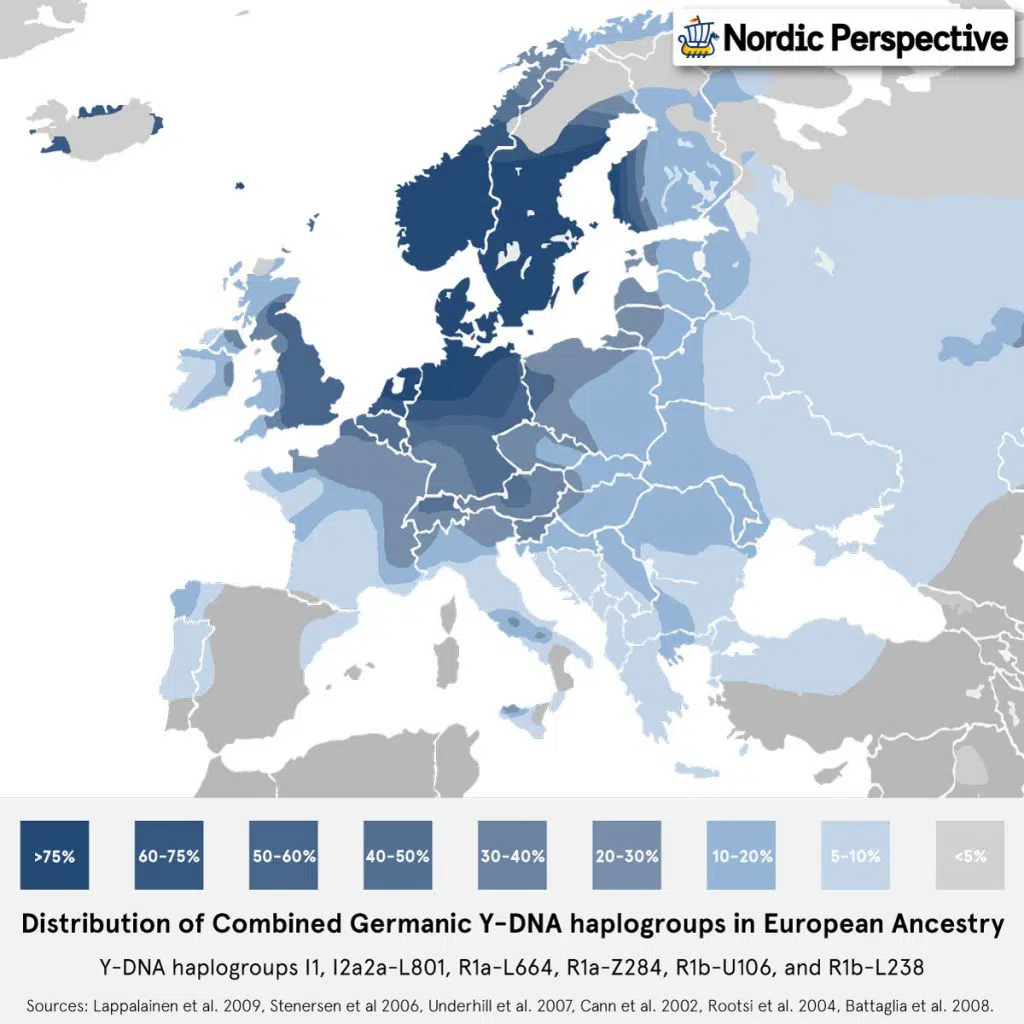
Is Germanic the Same as German?
The generally accepted definition of what and who qualifies as Germanic has little to do with the borders of modern-day Germany — or even the Germania of Roman times — but is instead tied to archaeological (weapons, tools, artifacts) and linguistical (runic script, modern Germanic languages) elements.
A Timeline of the Germanic People
If you found it hard to keep track of all the dates or just want an overview of the history of the Germanic people, here’s a handy timeline that goes 14 000 years back — taking you all the way up to the Viking Age and Carolingian Era:
The First Scandinavians
The first inhabitants of the Scandinavian peninsula came from the south (a people known as the Western Hunter-Gatherers), later joined by migrants from the east (known as Eastern Hunter-Gatherers)
The First Farmers Come to Scandinavia
The first farmers—originating from Anatolia and Syria and commonly called Early European Farmers—start arriving to Scandinavia with powerful new knowledge and tools. They competed and fused with the original inhabitants in the battle for access to the hunting and fishing grounds, which were both still a big part of the farmer’s diet.
Steppe Herders From The East
Another wave of migrants came into Scandinavia from the Russian steppes, originating from the northern shores of the Black sea and commonly called the Western Steppe Herders.
The Battle Axe Culture
The so-called Battle Axe culture group emerged out of the Scandinavian Hunter-Gatherers and Western Steppe Herders, establishing itself and flourishing in what today is Denmark, Sweden, and Norway.
The new culture is thought to have been a bit more individualistic (with single graves instead of in groups as earlier cultures), and was known for how their men were buried with their big boat-shaped battle axes in ways that resemble Germanic culture more and more.
They likely brought Indo-European languages and culture to the Scandinavian region
The Nordic Bronze Age
The bronze age Scandinavians have been found to be extensive traders of amber and various metals. Through this trade the Nordic people developed an unusual expertise in metalworking.
Based on metal deposit findings from that period, the Nordic Bronze Age culture seems to have been the richest culture in Europe.
During this time shipbuilding and seafaring becomes a substantial part of Scandinavian culture.
The Nordic Bronze Age people are thought to be the ancestors of all Germanic people.
The First Germanic People
The Nordic Bronze Age people eventually spread their influence south, and became what is known as the Germanic people of southern Scandinavia and northern Germany.
The Germanic and Scandinavian culture during this time was defined by four main characteristics that would last for more than 1100 years (until the end of the Viking Age):
1) Everyday life was very violent, and warriors were shaped early.
2) A materialistic culture was formed via expansive trading routes.
3) There was a clear hierarchy in society as a whole
4) The different Germanic tribes told and believed in their own versions of a Proto-Germanic folklore and mythology (which includes Norse Mythology).
It is estimated that around 15% of the total population in this region was killed in violent altercations during this time period, according to Harvard scientist Steven Pinker.
Climate Changes, War, and Iron Brings About Isolation and Migration
Most scholars agree that drastic climate changes had a brutal impact on the Scandinavian population during the early Iron Age, that was defined by warfare, hunger, and poverty in the region.
Due to the many wars between Celtic tribes and Mediterreanean kingdoms on the main continent, trade and influence from the rest of Europe happens at a much lower rate during this time, with the majority of commerce happening within the Nordic region.
The discovery of iron—which was plentiful in Northern Europe—changes everything for the Iron Age Scandinavians. They are no longer dependant on importing bronze for weapons and tools, but can now start producing them en masse.
A wave of Germanic tribes migrate South and East from Scandinavia during this time, landing in Poland and ultimately ending up in modern-day Czechia, Slovakia, Hungary, and Romania a few hundred years later.
The Germanic Tribes Thrive and Expand South (The Jastorf Culture is Born)
Despire being cut off from most of the other European cultures at the time, the Proto-Germanic population in southern Scandinavia (centered around southern Jutland) seems to be thriving, with a growing population observed alongside new technologies and economic development.
Most scholars agree that the Proto-Germanic culture that is centered around southern Jutland (southern Scandinavia) starts expanding around the same time as they find iron (5th century CE), and eventually splits up into a Nordic Iron Age culture (southern Scandinavia including most of Denmark) and the Jastorf culture (southern Denmark and northern Lower Saxony).
According to archeaological evidence, the Jastorf Culture shares many cultural aspects with their Scandinavian relatives, but starts coming into contact with continental Celtic tribes to a larger extent. This results in both cultural influences as well as expansion into formerly Celtic lands by the Germanic tribes.
Greek Traveler Pytheas Visits Scandinavia
While Alexander the Great is conquering Egypt and Persia on the opposite edge of the known world, the Greek traveler Pythea of Marseille make it to a place he calls Thule, where he describes what could be one of the first written accord of North-Germanic culture.
He describes a place were the sun never slept, north of the Arctic Circle, where the night was very short, only a few hours. He depicts the land as fertile, “rich in fruits that were ripe late in the year, and the people there made a beverage from honey. They threshed the grain in large houses, because of the cloudy and frequent rainy weather. In the spring they drove the cattle up into the mountains for summer work and stayed there all summer”.
Though he calls the land Thule, scholars have matched his descriptions with western Norway, and so agree that this is likely were he landed with his ship.
The Germanic Tribes Clash With the Roman Empire
Gaius Marius and Julius Caesar were the two first Roman generals to be forced to defend the edges of the Roman Empire from Germanic attacks, but certainly not the last.
In the centuries to come, Germanic tribes would keep testing the Roman defenses in their push southwards, with multiple documented wars between the two.
Celtic tribes are also pushed out of Central and Eastern Europe by different Germanic peoples, who are settling down in numbers all across the northern borders of the mighty Roman Empire.
The Marcomannic and Gothic Wars
Facing the might of the Roman Empire, Germanic tribes started forming federations and military alliances in ways they hadn’t previously.
This was especially evident in the Marcomannic wars (166-180 CE) and the Gothic wars (238-270 CE), which both were marked by many different tribes coming together against the much larger neighboring empire, and both by Germanic armies making it as far as Northern Italy.
The Great Germanic Migration Begins
Around the 4th century CE, tribes along the borders of the Roman Empire, such as the Franks, Goths, Alemanni, Alans, Huns, the early Slavs, Magyars, and Bulgars start massive migrations within or into the former Western Roman Empire, and across Eastern Europe.
Angles, Saxons, and Jutes Invades and Settles in Britain
The Roman rule of Brittania comes to an end around 410 CE, and Germanic tribes along the North Sea coast do not waste any time to pounce on this opportunity.
Many Anglo-Saxon warriors were already present in Britain as hired mercenaries, and new waves of Germanic people come flushing in to the island, ultimately forming new Anglo-Saxon kingdoms were Rome once ruled.
These kingdoms would be the beginning of what we call England today.
The Fall of the Roman Empire, and Rise of the Germanic Kingdoms
The massive migrations of Germanic and Slavic tribes throughout Europe in the 5th century ultimately contributes to that fall of the Western Roman Empire in 476 CE.
In its stead, multiple Germanic Kingdoms fill the power vacuum around the European continent.
These include the Frankish, Ostrogothic, Visigothic, Vandal, Suebi, Burgundian, and Anglo-Saxon kingdoms.
The Frankish Kingdom Expands
Tribes such as the Marcomanni and the Vandals who once lived on the edges of the Roman empire go on to new lands within the old empire, and in their place new Germanic tribes such as the Alamanni, Thuringians, Herules, Goths, and Gepids settle in Gaul, western and southern Germany, Austria, Czechia, Slovakia, Hungary and Romania.
Around this time, King Clovis I unites the Frankish tribes under one ruler for the first time, and starts a rapid Frankish expansion that would ultimately end with most of western, central and southern Europe under Frankish rule.
He is considered the first Merovingian ruler (known for their long hair), and would take control over most of the former Roman provinces of Gaul and Germania magna in his lifetime.
Germanic Seafaring and Conscription
Seafarers from the Scandinavian region start going on bolder and bolder naval expeditions around the European continent.
Trade with the continent grows again as Germanic kingdoms rule the former Roman lands, and the first conscriptions among villages in the Scandinavian kingdoms start.
This signals the beginning of more and more small groups of trained and organized warriors, which would later be referred to as Vikings.
The First Vikings
The Viking Age begins around 700 CE and really gets going with the sacking of Linidisfarne on June 8th, 793.
The Norse start pillaging, raiding and settling across Europe at an increasing rate, and the seafaring Norsemen experience an age of rapid expansion and bold exploration.
Charlemagne and the Carolingian Dynasty Takes Over Most of Europe
After almost 300 years of Merovingian rule in the Frankish Kingdom, Charlemagne is crowned Emperor of the Frankish Empire, a vast empire spanning across most of the western and central European areas that had previously been under Roman control.
The Empire was eventually split up in Western Francia (predecessor to modern-day France), Middle Francia (predecessor to modern-day Italy), and East Francia (predecessor to modern-day Germany).
It would also resurface as the Holy Roman Empire (though not under the Carolingian dynasty) in the middle ages.
Sources:
https://www.jstor.org/stable/45020171
https://www.jstor.org/stable/40849016
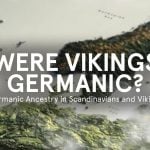 Scandinavian, Viking & Germanic Links Explained (With Maps)
Scandinavian, Viking & Germanic Links Explained (With Maps) Nordic vs. Germanic vs. Celtic: Differences & Links Explained (+ Maps)
Nordic vs. Germanic vs. Celtic: Differences & Links Explained (+ Maps)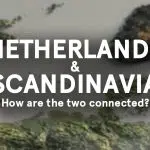 How the Dutch & Scandinavians Are Connected (Complete Guide)
How the Dutch & Scandinavians Are Connected (Complete Guide)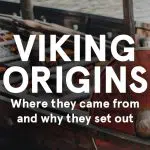 Viking Origins, Ancestry & Why They Set Out on Adventure
Viking Origins, Ancestry & Why They Set Out on Adventure

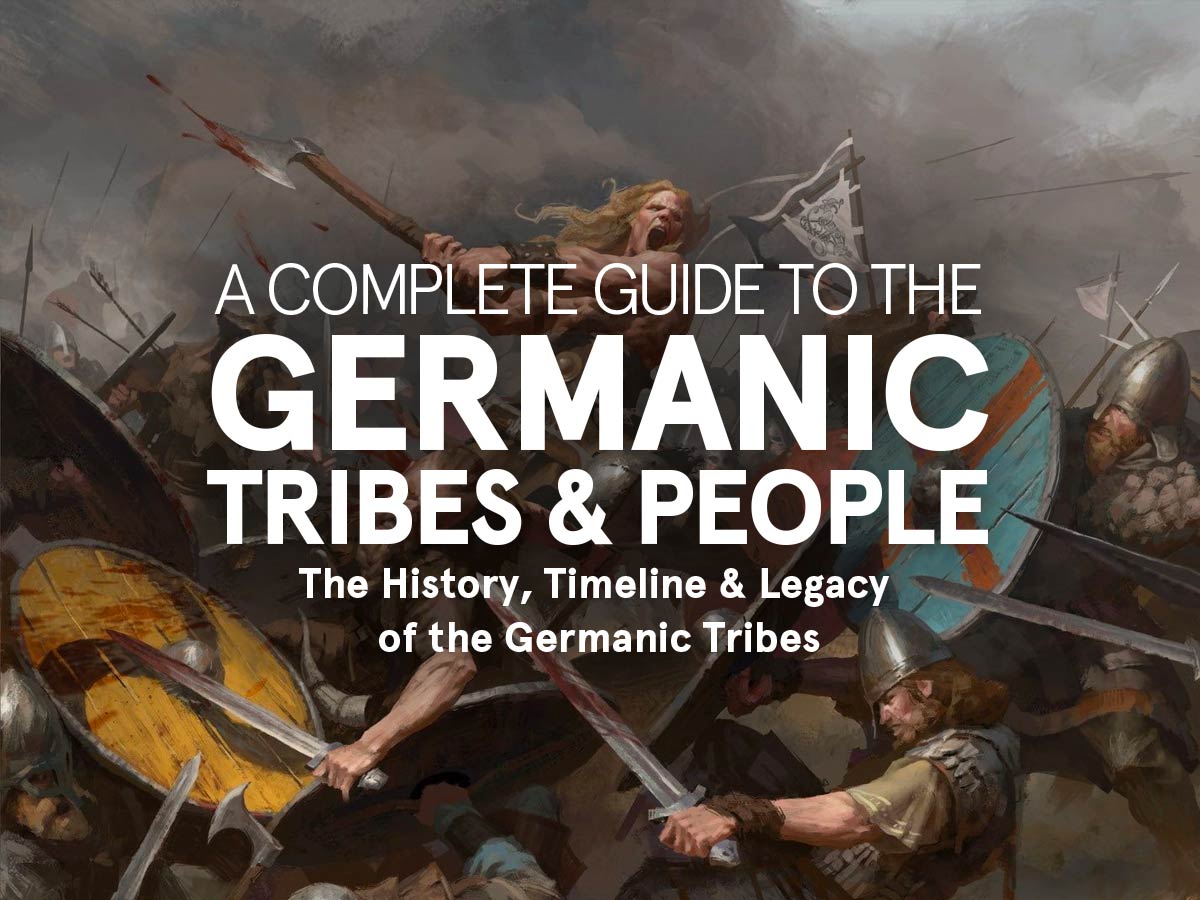
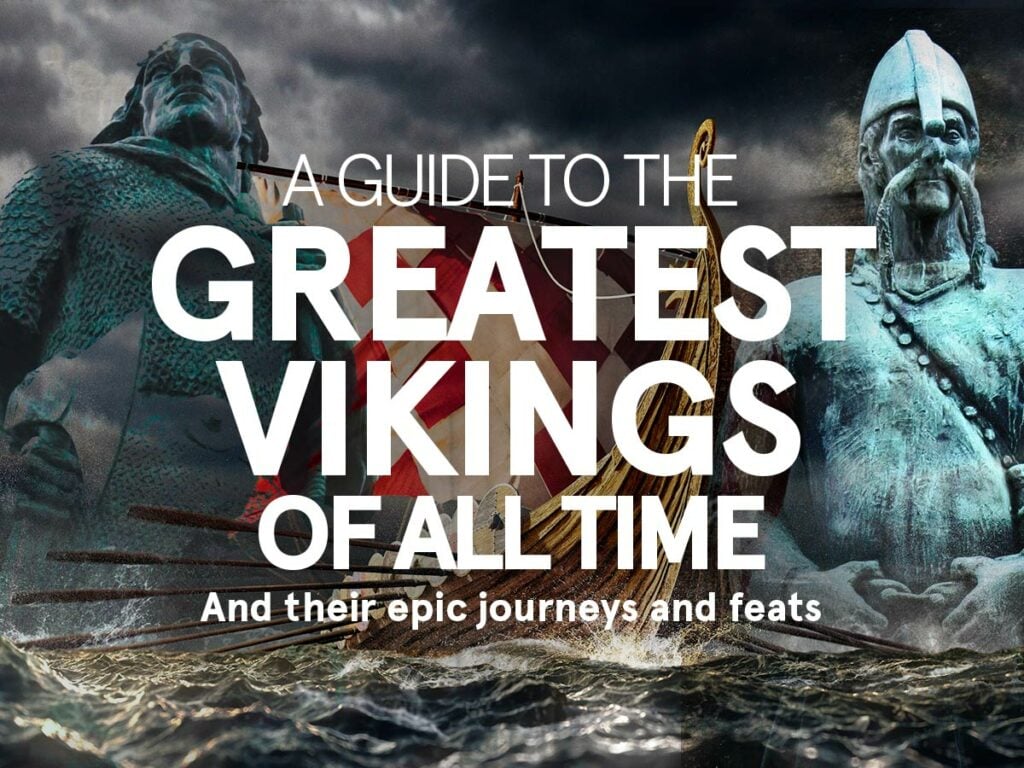
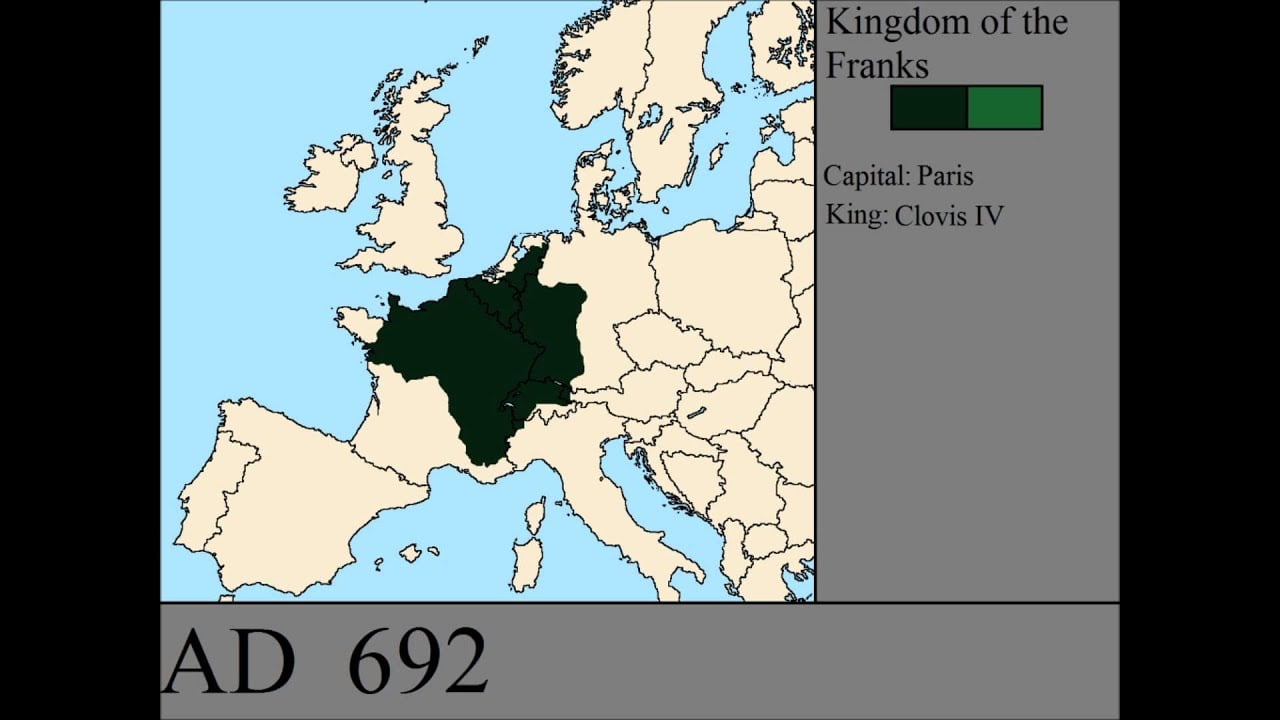
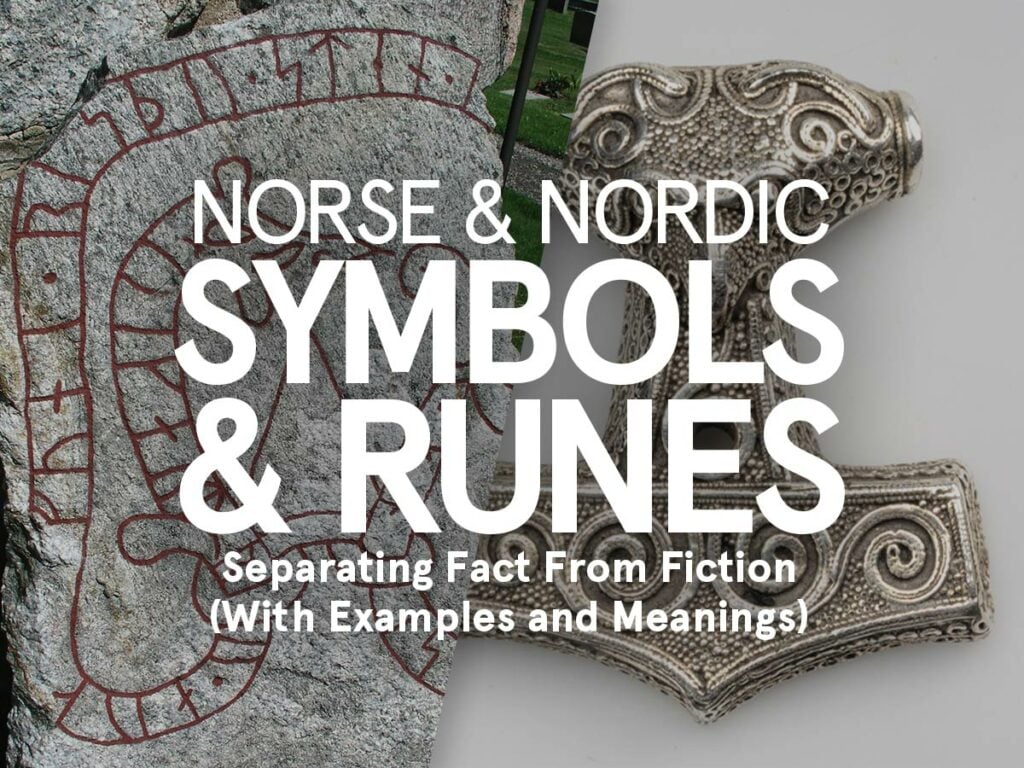
I get more interesting information about my brothers because I have Nordic/Germanic Y-DNA. My ancestors came with Alexander the Great from Europe to Asia 2300 years ago.
GOOD STUFF MAN! Looking forward to following you for more knowledge about a topic that is top of my list in research and learning.
Glad to hear you enjoyed the article Edward! It’s indeed a huge topic with a seemingly endless amount of interesting stuff to learn.
All the best,
–Karl
I am sorry to have to correct you about the the Angles. They did not live in Denmark. They lived in Holstein in northwest Germany. There is still a region there called Anglnland not far from Hamburg. You left out the Jutes, which live in Jutland in western Denmark near Anglnand, and the Saxons who also lived in Holstein.
The Briton in England were raided by Scots and ask the Angel brothers Horsa and Hengst to come an protect the borders. They were quite successful. they went home and told of a place with rich land and people who would be easy to conquer. They returned with an army of Angeln, Jutes and Saxons and took over England. They spoke Anglish, which became old English, and Angelnland became England. English is actually a German Language with hundreds of words that are the same, but over the pat 2000 years the complications of Germanic grammar have mostly vanished. The oldest writing in old English is Beowolf, which is about a war in Sweden. Now in England Sussex and Wessex are south and west Saxony. Each of the three tribes established independent kingdom, which were much later united under the king of Wessex.
You should also mention that the Danes conquered the northern half of England, which was called the Danelaw. Later all of England, under King Canut and later his son King Harda Canut. The present day spelling is Knut.
I am so glad I found your article. As an American with Gemanic ancestry I get tired of hearing “Native Americans” bash immigrants from Europe. I tell them we all have tribal roots. They just happened to get here before we did. All people have abused and been abused throughout history so no ’tribe’ is immune.